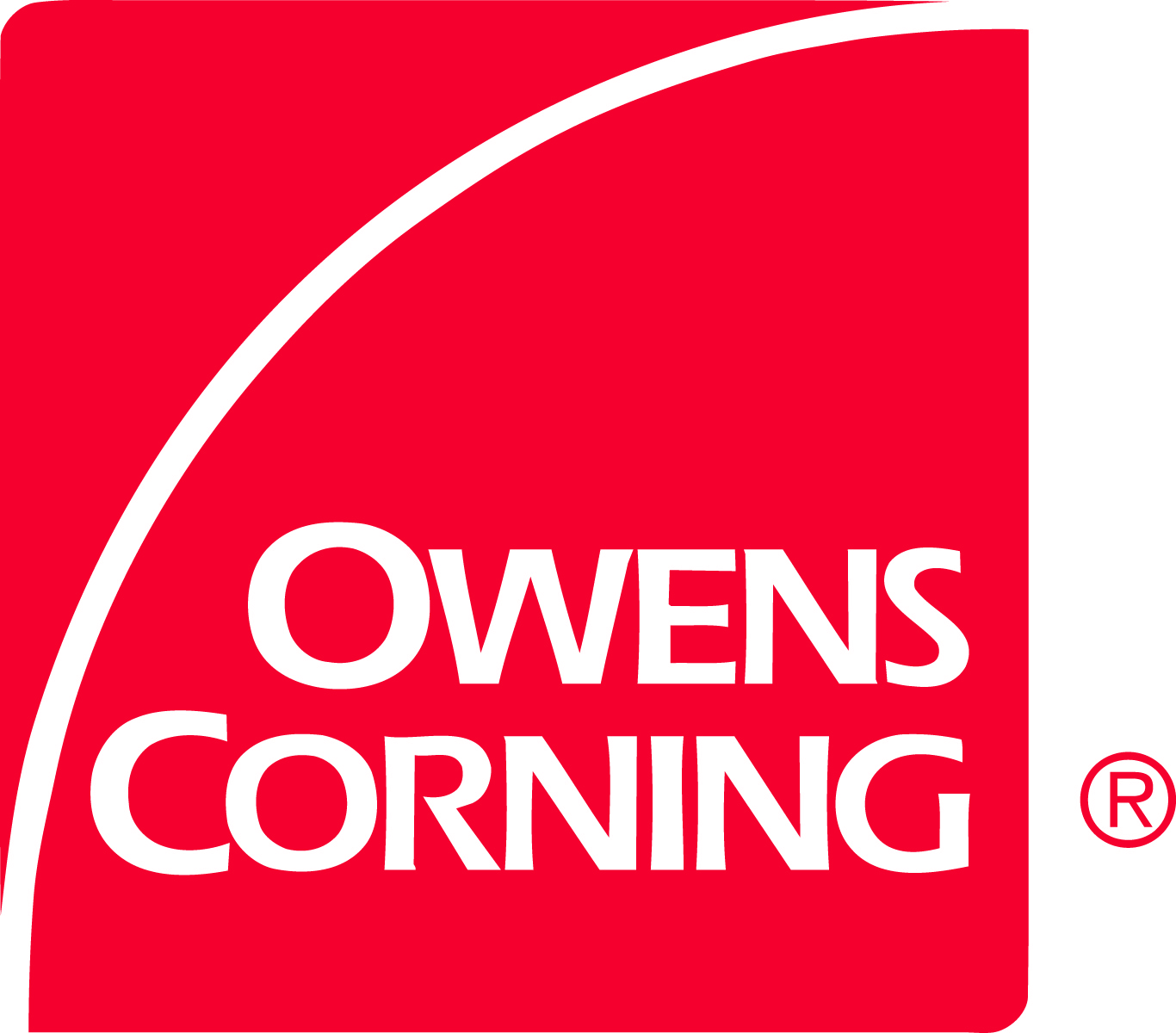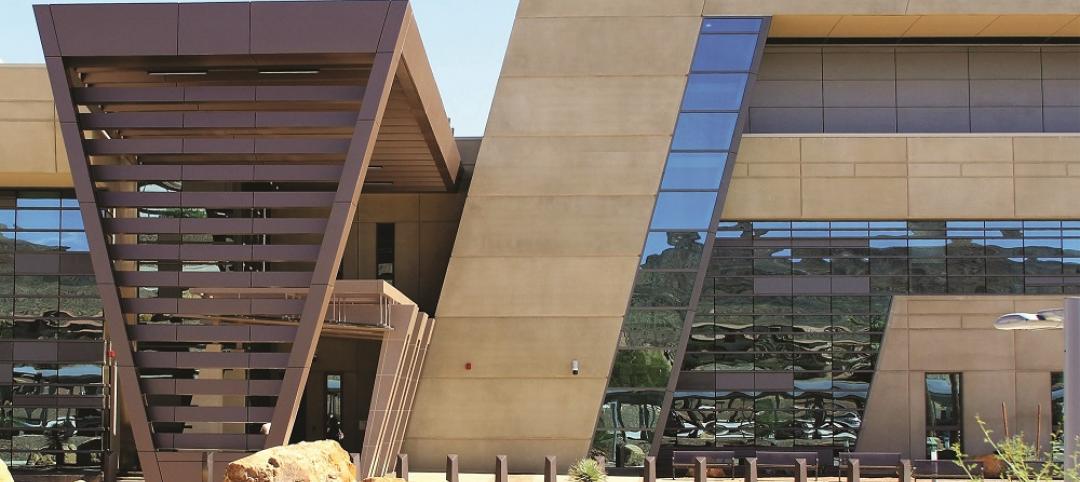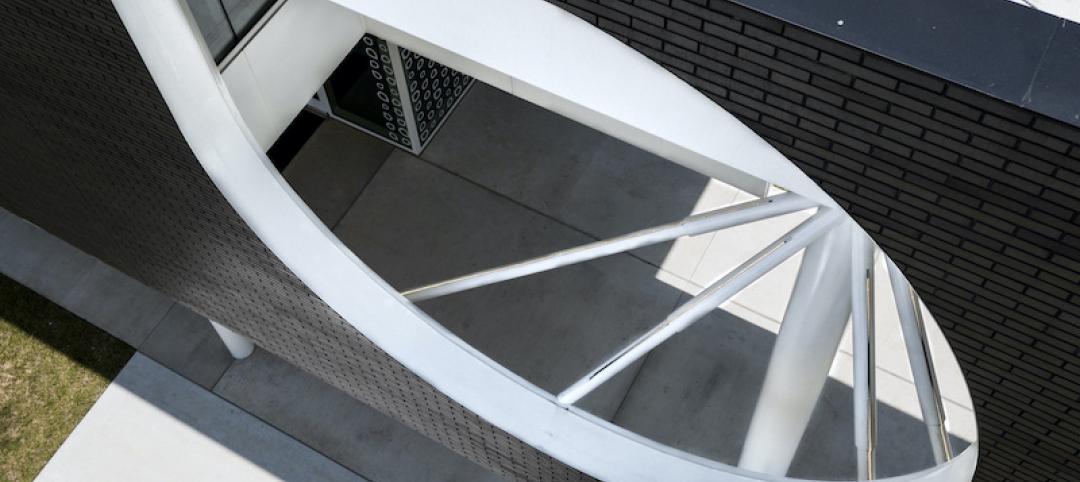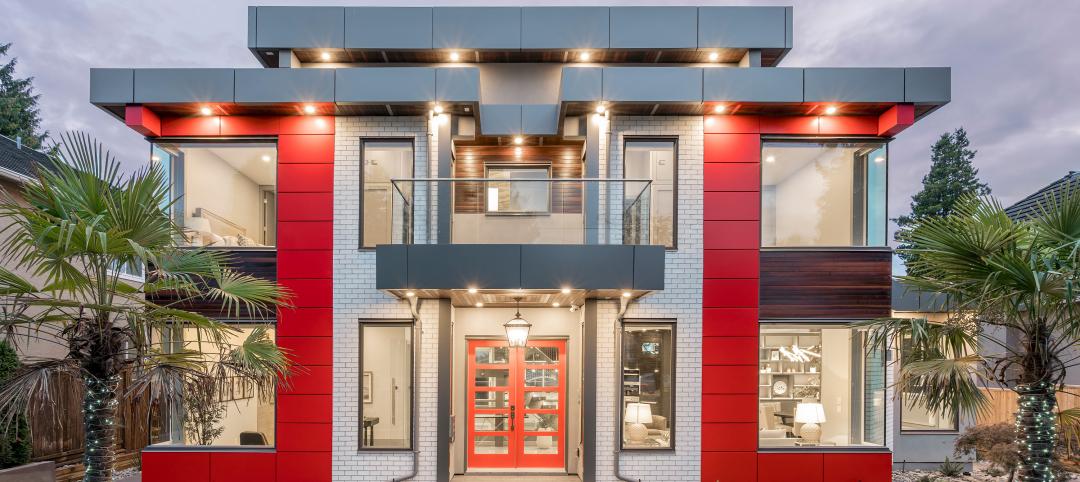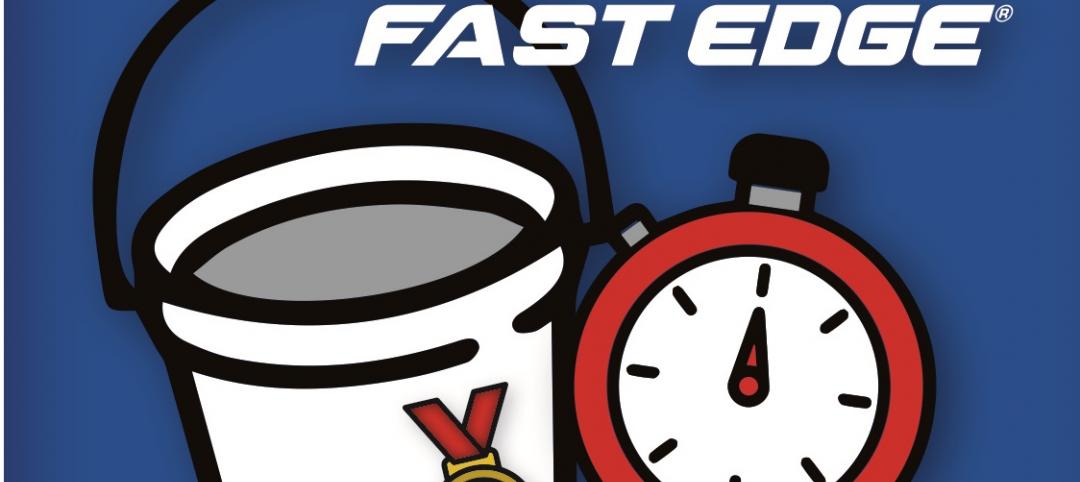Across climate zones, rising codes are increasing awareness of the role continuous insulation (ci) plays in helping buildings meet and exceed energy efficiency thresholds. But while thermal efficiency is a key function of ci in exterior walls, its benefits extend far beyond mitigating thermal bridging. The type of ci matters. Below, we look at how mineral wool insulation’s composition, engineering, and performance properties make it a smart choice in exterior assemblies – including supporting sustainability, mitigating liquid and vapor moisture, contributing to life safety, and even helping keep outdoor noise from travelling through the wall.
- Sustainability Profile: Comprised of byproducts from steel manufacturing, mineral wool insulation generally contains 70% or more recycled content. Its primary ingredients are limestone and iron ore, along with a binder. After just one month of use, a pound of mineral wool insulation can conserve the same amount of energy consumed in its manufacture.
-
Moisture Resistance: A high-performing building must be able to effectively manage liquid moisture as well as vapors. Additionally, the wall must be able to effectively navigate the flow of moisture regardless of its directional path and keep it from condensing in the wall cavity. With a minimal sorption of just 0.03%, Thermafiber® RainBarrier® insulation stands up to the demands of humidity, even in the harsh, hot, and humid environmental conditions measured by ASTM C1104 (120°F, 95% humidity for 96 hours). Such impressive resistance to moisture indicates consistent thermal performance during the expected service conditions of the thermal insulation. Additionally, the sorption property is consistent throughout the entire thickness of the mineral wool ci. Owens Corning evaluated Thermafiber® RainBarrier® 45 insulation using ASTM C518viii for thermal performance in extreme conditions beyond normal exposure in a cavity wall assembly. After 88 hours of submersion and subsequent draining, the samples dried out, and they exhibited no change in resistance to thermal conductivity. While extreme, this test demonstrates mineral wool’s resiliency when exposed to liquid moisture.
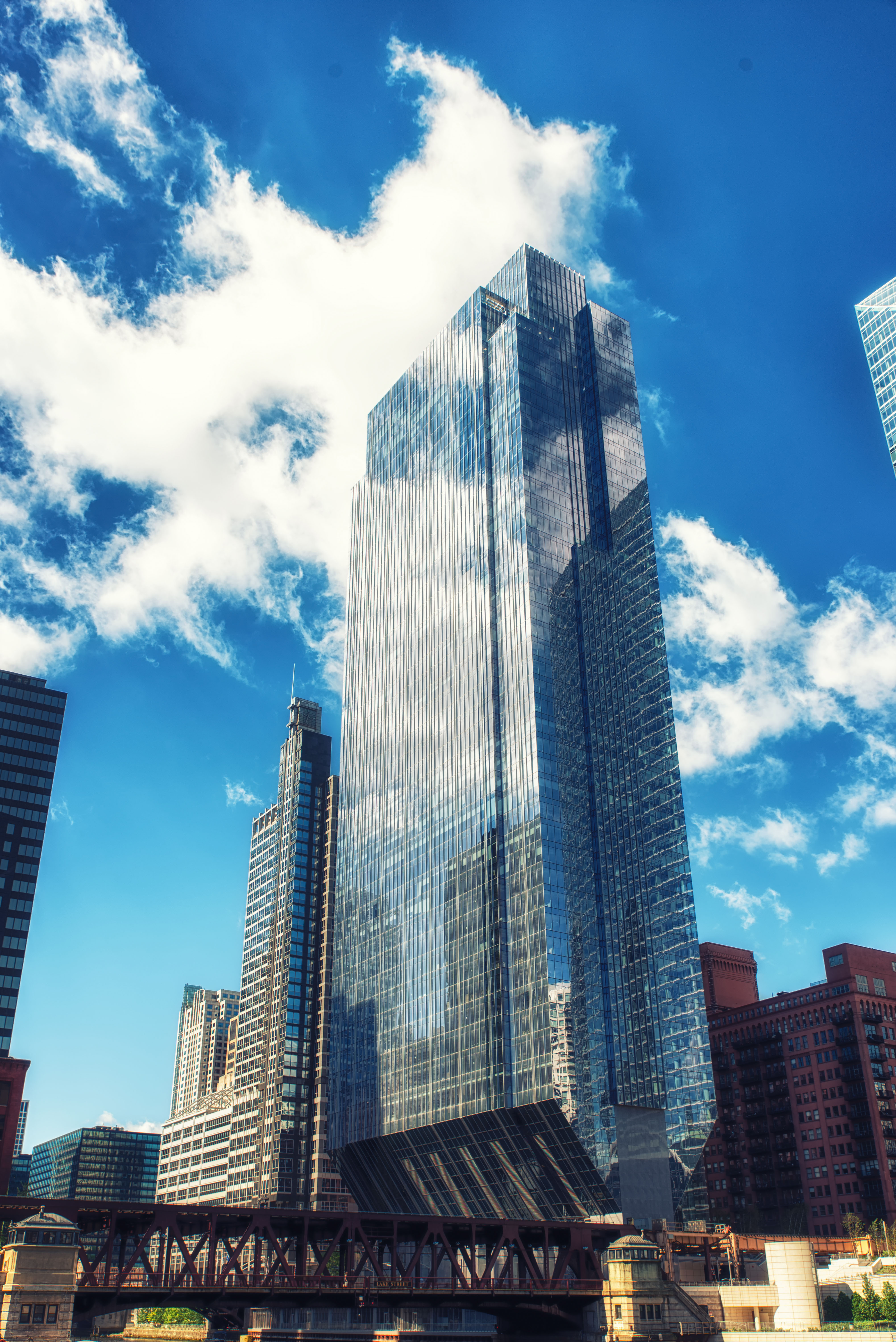
- Resilient: A demonstrated ability to withstand exposure to UV light, sleet, and rain makes mineral wool a resilient ci choice, even under prolonged exposure during construction or intermittent exposure in open-joint cladding systems. The Museum of the Moving Image in New York is a good example of resilience in action. Mineral wool in the museum’s unique open-joint assembly was exposed to the elements for nine months during one of New York City’s harshest winters on record, without compromising its properties. Used as a continuous insulation in the Sidney & Lois Eskenazi Hospital in Indianapolis, Thermafiber® RainBarrier® insulation lived up to its name as it withstood the Midwest’s fierce rainstorms during the hospital’s construction.
-
Life Safety Solutions: Life safety is always a driving factor when it comes to building design. The ASTM E119 time and temperature tests show that mineral wool outperforms foam, glass, and aluminum. In testing, mineral wool did not combust, even when exposed to temperatures exceeding 2,000°F for five hours – the upper limit of the testing period. Whether designing perimeter fire containment systems, fire rated wall assemblies, or NFPA 285 compliant assemblies, mineral wool, as a noncombustible material, can help meet the life safety requirements. Safety also goes hand in hand with reputation management for the professionals who specify life safety systems. In 2017, the U.S. Department of Homeland Security created the SAFETY Act. This designation provides protection against liability related to acts of terrorism. The protection serves both architects and building owners. Owens Corning is honored to be the first insulation manufacturer to receive this designation. While testing standards provide all-important verification that a material has withstood rigors imposed on a material under controlled conditions, a material’s performance in the “real world” provides practical assurance. Thermafiber® mineral wool insulation is trusted in several of the world’s most high-profile buildings – including four out of five of the tallest buildings in North America.

- Acoustically Agile: Today’s buildings are increasingly agile. Consider the global pandemic which saw convention spaces being transformed into makeshift hospitals and amplified the use of telemedicine. A building’s acoustics may suddenly demand a higher level of privacy or relative quiet, demanding enhanced acoustics. Attention to acoustics at the outset can help guard against costly renovations or marginally effective sound masking approaches. Wall design and the materials inside the assembly have a big impact on how sound is transmitted through a space. Designers have various insulation options when it comes to insulation materials used in the assembly. While fiberglass batt insulation has traditionally been widely used to reduce noise, research has shown mineral wool insulation offers similar sound transmission class performance depending on the wall assembly. For example, some studies have shown that a wall with lightweight drywall insulated with mineral wool can provide comparable acoustic performance to an assembly with standard weight drywall and fiberglass insulation.
- Thermal Performance: Finally, insulation is integral to supplementing the important thermal protection stud cavity insulation delivers in the exterior assembly. Steel framing and other materials behind the cladding can reduce thermal performance through thermal bridging. As ci is described in ASHRAE Standard 90.1, adding ci helps deliver a continuous and virtually uninterrupted layer of insulation that extends across all structural members with the exception of fasteners and service openings. Whether an architect is following a prescriptive path, performance path, or energy/cost budget path to meet energy objectives in an assembly, ci can help increase the R-value per inch of insulation. Minimizing the number of penetrations in a material is essential to preserving its thermal performance. A variety of attachment methods are available to install mineral wool as a ci in the exterior assembly. These options help further mitigate thermal loss through the continuous insulation.

When it comes to meeting rising energy codes and other performance goals, it’s not a matter of simply adding insulation, but adding the right insulation solution for the building application and environment. Considering the entire ecosystem of a building can help inform a smart insulating decision that will drive the optimal performance outcome. Thinking of buildings through the lens of smart, integrated systems and deploying the proper insulating materials can help architects manage the complex and sometimes competing demands posed by today’s buildings and codes. At the end of the day, achieving high-performing buildings is all about how the performance variables -- including thermal, life safety, and moisture mitigation systems -- work together.
For more information, please visit www.owenscorning.com/rainbarrier.
Owens Corning 2020. All rights reserved.
Related Stories
Sponsored | Voice of the Brand | Sep 8, 2020
How Fire Rated Glass Meets Lot Line Requirements Without Sacrificing Design
Sponsored | Voice of the Brand | Aug 17, 2020
Can Sustainable Materials Compete With Virgin Material?
Sponsored | Voice of the Brand | Jul 2, 2020
Solving the Building Envelope Challenge
Today, solutions for the building envelope need to meet exacting standards on two equally important fronts – long-term performance and enduring aesthetic appeal. In this article, CENTRIA demonstrates how its products meet the standard in two different scenarios – construction of a new hospital in Asheville, North Carolina, and the addition to a popular museum in Pittsburgh.
Sponsored | Voice of the Brand | Jun 5, 2020
Practice Style Transcendence with Brick
Get inspired! Brick’s adaptability has made it the premier building material for centuries even as styles come and go. Nothing says “classic” like brick, but nothing says “innovative” like brick either. Check out some examples of how fired clay brick remains a major presence in the 21st Century designer’s palette.
Sponsored | Voice of the Brand | May 7, 2020
How One Fabricator Uses ALPOLIC MCM as His Calling Card in the Residential Market
ALPOLIC metal composite materials have been used in the architectural and commercial building worlds for years. But recently, architects are starting to specify it for residential and other non-traditional applications. With exceptional warranties and a variety of finishes, it is a perfect fit for homeowners wanting something different.
Sponsored | Voice of the Brand | May 5, 2020
Two Schools Go for Bold Color and Eye-Catching Design
Metal wall panel systems with varying rib patterns and pops of color provide dynamic visual interest in two different new-construction school buildings. PAC-CLAD Precision Series Panels offer an affordable array of 45 standard colors and 12 panel options for endless cladding possibilities.
Sponsored | Voice of the Brand | Mar 10, 2020
How Trim-Tex’s Fast Edge® corner bead saves time & material
Trim-Tex recently rolled out its latest vinyl corner bead innovation, Fast Edge®, promising to drastically cut down on the time and material it takes to finish drywall corners. How much can these corner beads actually save contractors? They put it to the test!



